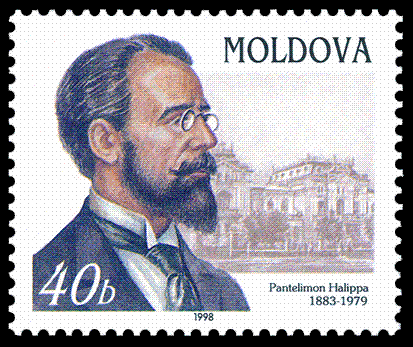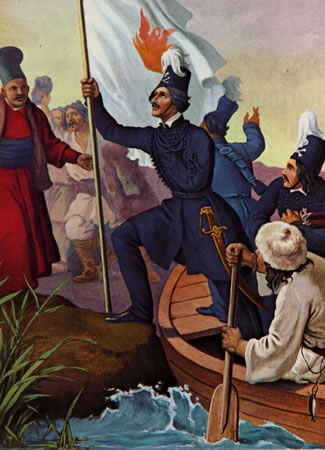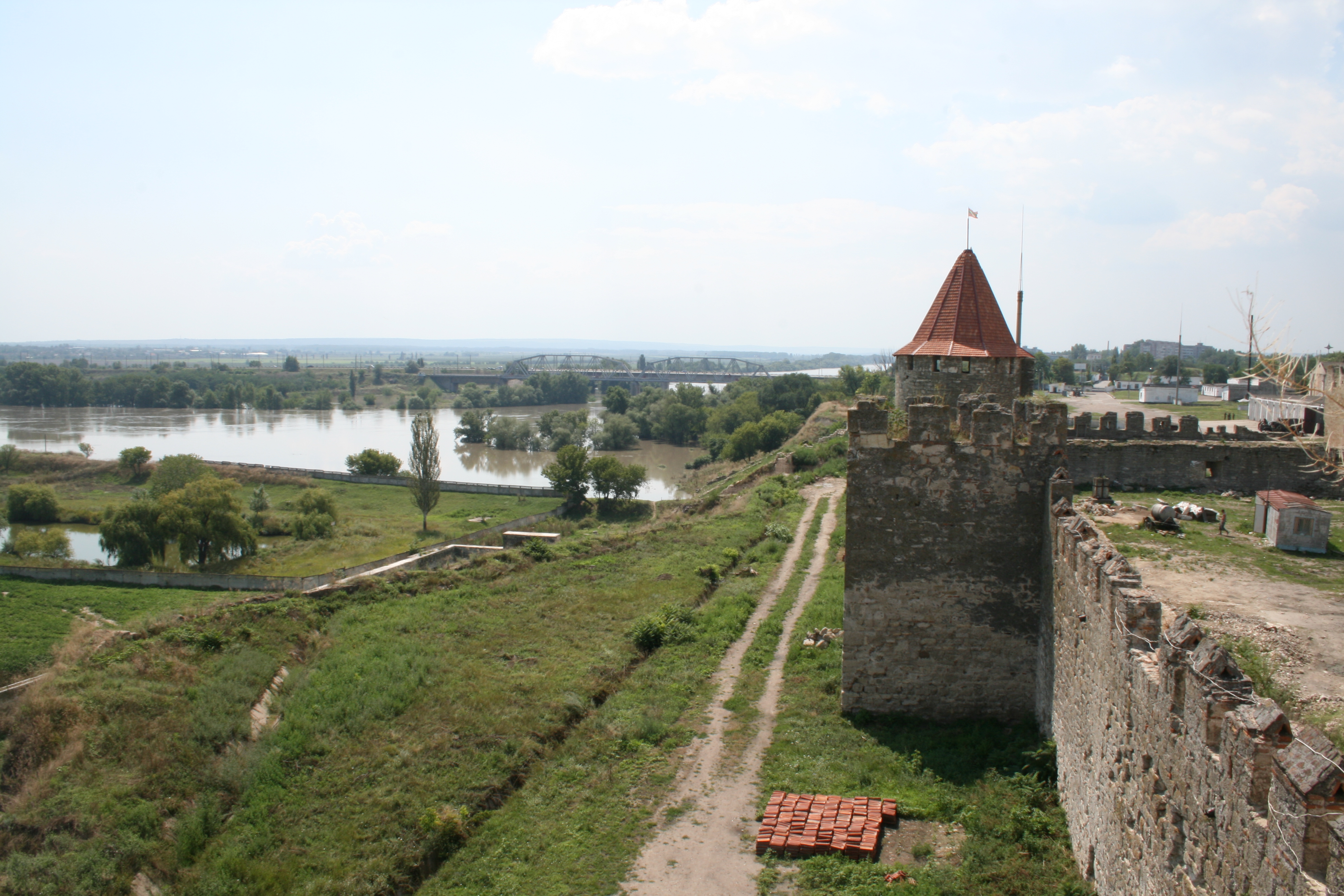|
Bălți Steppe
The Bălți Steppe () is a hilly area with few trees (apart from those near rivers Dniestr, Răut and numerous lakes and creeks), dominated by agriculturally cultivated land, and occasionally by grasses and shrubs, in the northern part of Moldova. It is characterised by moderate but unstable seasons, generally hot summers and cold winters. The Bălți Steppe has a total surface of 1,920 km, 2.7 per cent (51 km) of it are forests. The region, as the rest of Moldova, is traditionally an agricultural area, favored by several factors, such as the chernozem ( black earth). The untouched natural richness of the northern Moldavian region became known as Bălți steppe only in the beginning of the last century. Span and topography As a geographic area Bălți steppe is one of the three components of the Moldavian Plain, which in turn is one of the six components of the Moldavian Plateau. Despite the name, Bălți steppe is not a flatland, but a region dotted with hills. I ... [...More Info...] [...Related Items...] OR: [Wikipedia] [Google] [Baidu] |
Dniestr
The Dniester ( ) is a transboundary river in Eastern Europe. It runs first through Ukraine and then through Moldova (from which it more or less separates the breakaway territory of Transnistria), finally discharging into the Black Sea on Ukrainian territory again. Names The name ''Dniester'' derives from Sarmatian language, Sarmatian ''dānu nazdya'' "the close river". (The Dnieper, also of Sarmatian origin, derives from the opposite meaning, "the river on the far side".) Alternatively, according to Vasily Abaev ''Dniester'' would be a blend of Scythian language, Scythian ''dānu'' "river" and Thracian language, Thracian ''Ister'', the previous name of the river, literally Dān-Ister (River Ister). The Ancient Greek name of Dniester, ''Tyras'' (Τύρας), is from Scythian language, Scythian ''tūra'', meaning "rapid". The names of the Don River (Russia), Don and Danube are also from the same Iranian languages, Iranian word ''*dānu'' "river". Classical authors have also ... [...More Info...] [...Related Items...] OR: [Wikipedia] [Google] [Baidu] |
Sîngerei District
Sîngerei () is a district () in the north of Moldova, with the administrative center at Sîngerei. The other major city is Biruința. As of 1 January 2011, its population was 93,400. Between 1944 and 1991, Sîngerei district was called ''Lazovsky District''. History Localities with the earliest documentary attestation are Coşcodeni, Drăgăneşti, Sîngerei, Drăgăneşti, Tăura Veche, these being attested for the first time during 1508–1536. District administrative center Sîngerei is first documented on 17 May 1586. In the following centuries there is a development of trade, culture and an important increase in population. In 1812 the Treaty of Bucharest (1812), Treaty of Bucharest, Basarabia is occupied by the Russian Empire for a period of a century (1812–1917). After the Russian Revolution (1917), collapse of the Russian Empire in 1917, in 1918 Union of Bessarabia with Romania, Basarabia decide union with the motherland Romania, so the region today forming part of th ... [...More Info...] [...Related Items...] OR: [Wikipedia] [Google] [Baidu] |
Guilbert De Lannoy
Guilbert is a French surname. Notable people with the surname include: * Aimé-Victor-François Guilbert (1812–1889), French cardinal *Ann Morgan Guilbert, American actress * Frédéric Guilbert (born 1994), French soccer player * Nelly Guilbert (born 1979), French soccer player *René Charles Guilbert de Pixérécourt (1773–1844), French theatre director and playwright * Walter D. Guilbert (1844–1911), American politician *Yvette Guilbert, French singer and actress See also *Guilbert and Betelle Guilbert and Betelle was an architecture firm formed as a partnership of Ernest F. Guilbert and James Oscar Betelle. The firm specialized in design of schools on the East Coast of the United States, with an emphasis on the "Collegiate Gothic" style. ..., an American architecture firm * Guilbert (crater), a crater on Venus * Gilbert (other) {{surname, Guilbert French-language surnames ... [...More Info...] [...Related Items...] OR: [Wikipedia] [Google] [Baidu] |
Venetian Mateus De Murano
Venetian often means from or related to: * Venice, a city in Italy * Veneto, a region of Italy * Republic of Venice (697–1797), a historical nation in that area Venetians might refer to: * Masters of Venetian painting in 15th-16th centuries * City dwellers of Venice Venetian and the like may also refer to: * Venetian language, a Romance language spoken mostly in the Veneto region * Venice, Florida, a city in Sarasota County, United States *The Venetian Las Vegas, a resort hotel and casino in Las Vegas, Nevada *The Venetian Macao, a hotel and casino in Macau, China *Venetian blind, or Venetian, a common type of window blind similar to Persian blind *Venetian curtain, a type of theater front curtain *''The Venetian Woman'', ''The Venetian Comedy'', or ''The Venetian'' originally ''La veniexiana'' (play), a comedy in Venetian language, 1535-1537 *''The Venetians'', an 1892 novel by Mary Elizabeth Braddon * ''The Venetian'' (play), a work by Clifford Bax * ''The Venetian'' (film), ... [...More Info...] [...Related Items...] OR: [Wikipedia] [Google] [Baidu] |
Prut
The Prut (also spelled in English as Pruth; , ) is a river in Eastern Europe. It is a left tributary of the Danube, and is long. Part of its course forms Romania's border with Moldova and Ukraine. Characteristics The Prut originates on the eastern slope of Mount Hoverla, in the Carpathian Mountains in Ukraine ( Ivano-Frankivsk Oblast). At first, the river flows to the north. Near Yaremche it turns to the northeast, and near Kolomyia to the south-east. Having reached the border between Moldova and Romania, it turns even more to the south-east, and then to the south. It eventually joins the Danube near Giurgiulești, east of Galați and west of Reni. Between 1918 and 1939, the river was partly in Poland and partly in Greater Romania (Romanian: ''România Mare''). Prior to World War I, it served as a border between Romania and the Russian Empire. After World War II, the river once again denoted a border, this time between Romania and the Soviet Union. Nowadays, for a length of ... [...More Info...] [...Related Items...] OR: [Wikipedia] [Google] [Baidu] |
Dniester
The Dniester ( ) is a transboundary river in Eastern Europe. It runs first through Ukraine and then through Moldova (from which it more or less separates the breakaway territory of Transnistria), finally discharging into the Black Sea on Ukrainian territory again. Names The name ''Dniester'' derives from Sarmatian ''dānu nazdya'' "the close river". (The Dnieper, also of Sarmatian origin, derives from the opposite meaning, "the river on the far side".) Alternatively, according to Vasily Abaev ''Dniester'' would be a blend of Scythian ''dānu'' "river" and Thracian ''Ister'', the previous name of the river, literally Dān-Ister (River Ister). The Ancient Greek name of Dniester, ''Tyras'' (Τύρας), is from Scythian ''tūra'', meaning "rapid". The names of the Don and Danube are also from the same Iranian word ''*dānu'' "river". Classical authors have also referred to it as ''Danaster.'' These early forms, without -''i''- but with -''a''-, contradict Abaev's hypoth ... [...More Info...] [...Related Items...] OR: [Wikipedia] [Google] [Baidu] |
Herodotus
Herodotus (; BC) was a Greek historian and geographer from the Greek city of Halicarnassus (now Bodrum, Turkey), under Persian control in the 5th century BC, and a later citizen of Thurii in modern Calabria, Italy. He wrote the '' Histories'', a detailed account of the Greco-Persian Wars, among other subjects such as the rise of the Achaemenid dynasty of Cyrus. He has been described as " The Father of History", a title conferred on him by the ancient Roman orator Cicero, and the " Father of Lies" by others. The ''Histories'' primarily cover the lives of prominent kings and famous battles such as Marathon, Thermopylae, Artemisium, Salamis, Plataea, and Mycale. His work deviates from the main topics to provide a cultural, ethnographical, geographical, and historiographical background that forms an essential part of the narrative and provides readers with a wellspring of additional information. Herodotus was criticized in his times for his inclusion of "legends an ... [...More Info...] [...Related Items...] OR: [Wikipedia] [Google] [Baidu] |
Forests
A forest is an ecosystem characterized by a dense community of trees. Hundreds of definitions of forest are used throughout the world, incorporating factors such as tree density, tree height, land use, legal standing, and ecological function. The United Nations' Food and Agriculture Organization (FAO) defines a forest as, "Land spanning more than 0.5 hectares with trees higher than 5 meters and a canopy cover of more than 10 percent, or trees able to reach these thresholds ''in situ''. It does not include land that is predominantly under agricultural or urban use." Using this definition, '' Global Forest Resources Assessment 2020'' found that forests covered , or approximately 31 percent of the world's land area in 2020. Forests are the largest terrestrial ecosystems of Earth by area, and are found around the globe. 45 percent of forest land is in the tropical latitudes. The next largest share of forests are found in subarctic climates, followed by temperate, and subtrop ... [...More Info...] [...Related Items...] OR: [Wikipedia] [Google] [Baidu] |
Deforestation
Deforestation or forest clearance is the removal and destruction of a forest or stand of trees from land that is then converted to non-forest use. Deforestation can involve conversion of forest land to farms, ranches, or urban use. About 31% of Earth's land surface is covered by forests at present. This is one-third less than the forest cover before the expansion of agriculture, with half of that loss occurring in the last century. Between 15 million to 18 million hectares of forest, an area the size of Bangladesh, are destroyed every year. On average 2,400 trees are cut down each minute. Estimates vary widely as to the extent of deforestation in the tropics. In 2019, nearly a third of the overall tree cover loss, or 3.8 million hectares, occurred within humid tropical primary forests. These are areas of mature rainforest that are especially important for biodiversity and carbon storage. The direct cause of most deforestation is agriculture by far. More than ... [...More Info...] [...Related Items...] OR: [Wikipedia] [Google] [Baidu] |
Forest Steppe
A forest steppe is a temperate-climate ecotone and habitat type composed of grassland interspersed with areas of woodland or forest. Locations Forest steppe primarily occurs in a belt of forest steppes across northern Eurasia from the eastern lowlands of Europe to eastern Siberia in northeast Asia. It forms transition ecoregions between the temperate grasslands and temperate broadleaf and mixed forests biomes. Much of Russia belongs to the forest steppe zone, stretches from Central Russia, across Volga, Ural, Siberian and Far East Russia. In upper North America another example of the forest steppe ecotone is the aspen parkland in the central Prairie Provinces, northeastern British Columbia, North Dakota, and Minnesota. It is the transition ecoregion from the Great Plains prairie and steppe temperate grasslands in the south to the Taiga biome forests in the north. In central Asia the forest steppe ecotone is found in ecoregions in the mountains of the Iranian Plateau, in ... [...More Info...] [...Related Items...] OR: [Wikipedia] [Google] [Baidu] |





